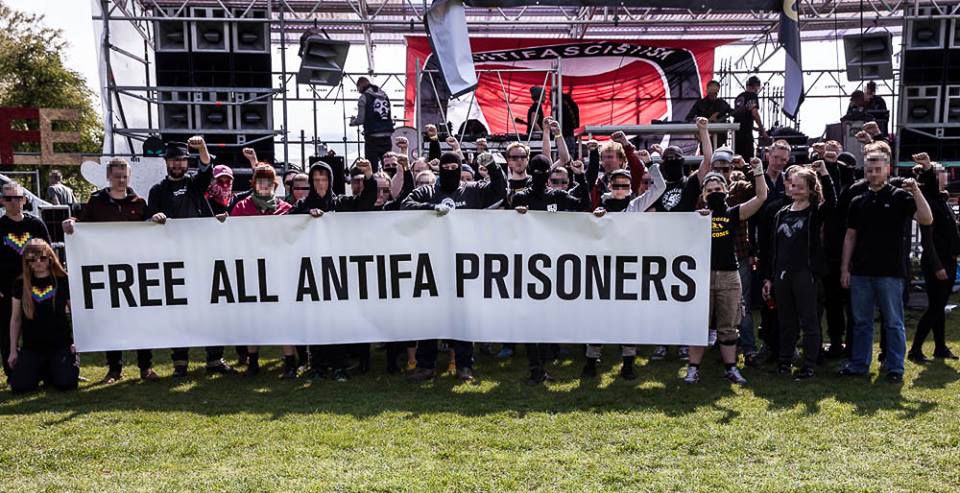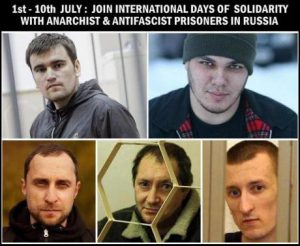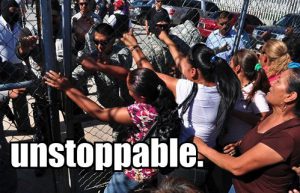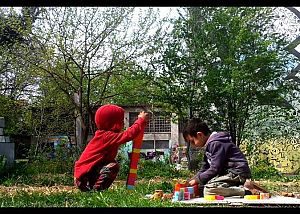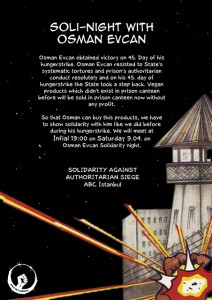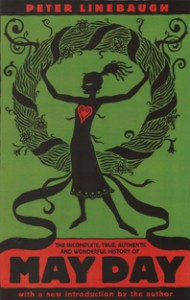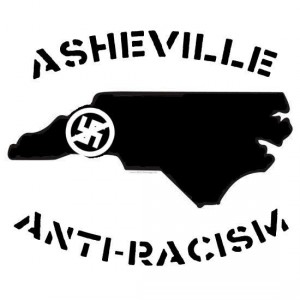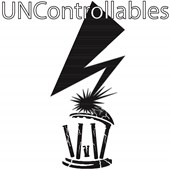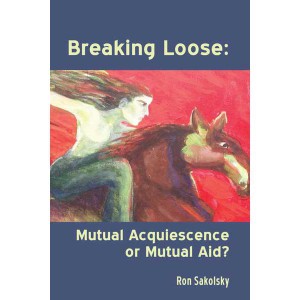KHY and Intl Antifascist Prisoners Solidarity
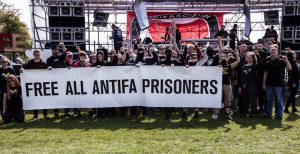
The first segment is a short conversation with members of NYC Antifa, an antifascist group in New York City. In this conversation we talk a bit about the history of this day of solidarity plus the state of fascism in the US and abroad. This conversation was transcribed and re-recorded to protect the folks’ identities. To learn more about this, you can visit https://nycantifa.wordpress.com/, and to donate to the international defense fund you can visit https://intlantifadefence.wordpress.com/about-2/
A large portion of this episode is a conversation with a member of Keep Hoods Yours. Keep Hoods Yours, or KHY, is a radical graffiti crew based in the SF Bay Area that organizes against gentrification, against sexual predators in the scene, against racism and more. During the conversation, we’ll hear about the rebel cultural car events called Sideshows, the police killing of Richard
Perkins during one of these Sideshows, KHY participation in uprisings against the Ferguson verdict, resistance to Fast Agent and poning of Kenny Truong and the shutdown of racist, gentrifying business “Locals Corner” in the Mission District. You can find KHY on Instagram or in the
streets. This interview was formatted into a zine by 1312 Distro and is available for printing thanks to IGD.
Announcements
Luke O’Donovan Solidarity
On July 25th at 9 am Luke O’Donovan will walk out of Washington State Prison after serving two years there. We are thrilled to see our friend free from behind prison walls. He is in high spirits and very excited to be released. As many of you who have been in touch with him know, he has occupied his time with a rigorous workout routine, lots of reading, and correspondence with all those who took the time to communicate with him.
Unfortunately he will not be allowed to return to his home and life in Atlanta. Due to the judge adding a banishment condition to his probation, Luke will have to move all the way to the West Coast for the next eight years, or until the conditions of his probation are changed. Moving forward, here are some ways to continue to support Luke as he starts life on strict probation.
Money– Luke will need money in order to cover his living expenses while he gets on his feet and moves his belongings and life to the West Coast. He will also need money to cover the probation and drug testing fees that he will be subject too. You can donate or set up recurring donations by visiting their paypal site.
Care Packages– Luke will need lots of little things, like clothes to rebuild his wardrobe, delicious vegan food, and other items that you are not allowed to have in prison. If you would like to send a care package please email letlukego@gmail.com to work out details on where and what to send.
Solidarity and Support- Throughout Luke’s case and subsequent imprisonment the support and solidarity he has gotten has been overwhelming. From the solidarity marches and actions to the mountain of mail and the hundreds of postcards sent to the judge we have been thrilled by all those who have taken action for him. Once things are more clear we will begin trying to get his banishment condition appealed, check back for updates. For now any and all actions are appreciated. As Luke’s new living situation isn’t worked out yet we can’t provide contact info at this time, but email us at letlukego@gmail.com if you want to get in touch.
Luke is set to be free from prison, but there is still a lot to do. Thanks everyone for your past and future support.
. … . ..
. … . ..
Transcription
What follows is the transcript from an interview with Keep Hoods Yours (KHY) that appeared on The Final Straw Radio (TFSR). KHY is an anti-authoritarian, anti-gentrification, anti-sexist, anti-racist and so forth, graffiti crew based in the San Francisco Bay Area. This interview talks about organizing in youth culture, radical potentials in graffiti, some of the struggles that KHY has been involved in and more. The Final Straw is a radical radio program out of Asheville, N.C. and their episodes can be found here: https://thefinalstrawradio.noblogs.org/. This interview was transcribed in an effort to broaden conversations around radical organizing and antagonism within vibrant subcultures that anarchists and other radicals find themselves involved in. Ultimately, it also serves as a proposal and a challenge to punks, graffiti writers, skateboarders, dancers, musicians and artists of many forms to never pass up on an opportunity to strategically target our enemies and fire at will, and to explore the creative cultures we find ourselves enmeshed with for spaces to attack from. Or, in the words of the KHY interviewee, to “develop an antagonistic, decentralized, popular culture of resistance that can hopefully develop our capacity to identify and attack the various forces which exploit poor and working class spaces, including gentrifi cation, police violence, rape culture and local white supremacist and fascist efforts.”
TFSR: Well first off let’s talk about, what is a graffiti crew? For those people listening who may know nothing about graffiti culture, what is it and how does it operate?
KHY: Well they vary from crew to crew, but for the most part a graffiti crew is a semi-formal grouping of graffiti writers that have similar styles, aesthetic choices and a philosophy towards the craft. They group up and collaborate in order to do graffiti, to exchange styles, knowledge, strategies, and supplies and generally have each other’s backs. Since it’s a culture that’s rooted in the streets, anything can happen. And it being illegal, we can’t really rely on mainstream institutions to solve conflicts. But it varies. For some crews, they’re just drinking buddies. For others, they are very serious, formal, tight-knit and organized. It definitely varies.
TFSR: I guess the first thing people would think of when they think graffiti-crew; they think it’s automatically connected with a gang.
KHY: It’s actually not, it’s often the other way around actually. Especially in working-class neighborhoods, some youth do graffiti instead of falling in the gang trap. In some cities, gangs and graffiti crews get along or just don’t beef, while in other cities it’s much different. In some crews there’s overlap in gang affiliations and graffiti crews. But for the most part they’re two very separate worlds that sometimes conflict.
TFSR: So sense of place seems pretty central to the idea of KHY. Could you tell some of our listeners about, generally speaking, the upbringing of many of the people involved? What do you think drew them to become involved in KHY? And, what kind of drives people to be engaged in this activity that could potentially be legally dangerous for them?
KHY: All of the people involved in this project at this time were born and raised in the Bay Area. Part of what’s driven folks to become involved in KHY is just been seeing the blatant gentrification, police violence and other problems in our neighborhoods. And also seeing how liberal non-profit efforts at changing things fail completely. These efforts usually end up alienating folks in the hoods that are probably attracted to things like KHY, because they see it as a way to engage with the oppressive things happening in their neighborhoods without committing themselves to reformist or legal means. It’s potentially dangerous, but the reality for folks is that the problems they’re dealing with are already dangerous. They face a larger danger from losing people in their community to police violence, to gentrification, to having families split apart, to the erasure of their culture and the loss of dignity that comes with it, that kind of thing. So really, the risk of catching a misdemeanor case for writing on a wall, it doesn’t feel all that dangerous compared to our daily reality.
TFSR: And let’s talk specifically now about KHY and how, when did it form, and overall what are it’s goals? And also, as both a radical project and a graffiti crew, how did it evolve over time since it first started?
KHY: KHY formed at about 2008-2009 with just a couple of us, and it’s grown over time. It’s grown at a much faster rate in the last three years or so. It’s really just a graffiti crew that’s rooted in radical ideas, including anti-capitalist, anti-authoritarian and anti-colonial thought. KHY aims to highlight the anti-property values of graffiti culture by exploring how targeted graffiti application could be used as a form of direct action. Also using culture, like active youth culture and radical organizing, to help develop an antagonistic, decentralized, popular culture of resistance that can hopefully develop our capacity to identify and attack the various forces which exploit poor and working class spaces, including gentrification, police violence, rape culture and local white supremacist and fascist efforts.
TFSR: Great, thanks for sharing that. And let’s talk about what kind of campaigns you all have been involved in. To me, the first thing that pops up in my mind is Local’s Corner, which obviously wasn’t something that was started by you guys but is something you were involved in. If you could talk about that, and just what happened (Local’s Corner is closed now, it was a restaurant in the Mission District). Also, you’re involved in a campaign around Fast Agent, so if you could just talk to us about what both of those were, and why you chose those as targets.
KHY: The Local’s Corner campaign, it was a very obvious example of the blatant colonial white supremacist mentality behind some of the gentrifiers in the mission district. For folks who don’t really know the story behind it, it involves the owner refusing to seat people of color. There’s one specific incident where they denied a Latina mother and her kids a table, claiming that there weren’t enough seats, and then sat down a group of customers of the same size right after. There’s another incident where some local students carried out a test, where they had a group of white students come in, and they were given seating, and then they had a group of students of color come in, and they weren’t given seating. There was already a lot of local anger at that business, but the mainstream liberal attempts to hold them accountable were failing. Folks had a petition floating around, they had some protests, but none of that really put enough pressure alone on Local’s Corner to really do anything. KHY targeting Local’s Corner was the tipping point for their business. The bad publicity along with the mainstream legal pressure, then on top of that the repeated vandalism, which became popularized as other folks not involved with KHY in any way began replicating the strategy themselves, it was just the final straw. And they closed, they called it. We did that to show that direct action can be accessible to folks who don’t feel as familiar with it, ya know? It doesn’t necessarily need to involve a high-risk action, like burning something down. It can be creative, accessible, less of a risk than folks assume. And it can be effective, it can shut things down. You can make a gentrifying business get the fuck out of your town.
TFSR: I would assume for younger people that would be like a big tipping point, like “Oh we actually shut this thing down.”
KHY: Yeah, and I think that a lot of people saw that, even some of the liberal people gave us credit, they said that KHY had a lot to do with it, that they wouldn’t have closed without our efforts. And I think that legitimized direct action and more militant, illegal tactics n the eyes of the community, because it was effective. It was a small victory, but people were glad to see them leave. It also engaged a lot of folks who had never been involved in direct action before. Once other graffiti writers began vandalizing it, writing messages, their names, just scribbling over it, whatever, they became engaged in that process. They were able to build their confidence in attacking what essentially attacks them.
TFSR: Yeah, and I also think that’s interesting with the Fast Agent thing, which basically are a bunch of ads that are on bus stop benches, I see it as you are targeting things that are in the social landscape, like “Hey, get this!”
KHY: Definitely. It’s essentially what graffiti’s always been about. It’s been a battle for the public visual landscape. There’s something inherently very antagonistic, anti-property, and anti-capitalist about graffiti. So Fast Agent is an advertising campaign for the real estate agent who has the highest record for flipping properties in the neighborhoods being targeted by gentrification, the number one real estate agent in the East Bay. His name is Kenny Trong, and he, like Local’s Corner, already faced a lot of resentment from the locals. He wasn’t very strategic about it either. He did a lot of talking shit to people online and instigating and being condescending to folks. And part of that entitlement was blasting West Oakland and parts of East Oakland with these Fast Agent ads to take up space and show his presence, to assert his economic power.
So we started targeting him, and encouraging other folks to do so. At this point it’s been our campaign that’s had the widest participation than any other. I mean there’s been hundreds of other people from all walks of life who’ve tagged on them, vandalized them, ripped them out, far more than we ever did. It’s normalized, decentralized, has a life of it’s own, has little to do with us. And again, it goes to show that you don’t necessarily have to be a part of a group or organization. You don’t have to go through legal means or follow the law. You don’t have to ask for anything, you can just take resistance into your own hands, at your own pace, even if you’re isolated and even if you don’t want to be a part of anything formal. And at this point it’s been going on for over a year.
TFSR: Let’s talk a little bit about; if people are going to look at KHY stuff, primarily they do that through instagram. So how do you find, through engaging in social media, have you been able to build relationships with other projects through this? And also, what is it like using social media as a means to show people what the crew has been doing, but at the same time obviously the police use that as a means for surveillance?
KHY: So far, social media has been a means to highlight some of our ideas of resistance to folks who aren’t already involved in radical circles. Folks that are already radicalized, that are already involved in radical movements, don’t need social media to get informed. So the social media thing was really meant as a way to engage folks in the hood who were on social media anyways. So far, it has helped build some solidarity. We’ve reached out to folks in other cities across the west coast, the U.S., even in other countries. Just as far as exchanging some inspiration, news, strategy, ideas, just making those connections between similar struggles in different cities. There’s been a lot of sharing too, folks will send us photos of them doing politicized graffiti in their cities, things that are going on in other places. We’ve had folks use politically targeted graffiti in application and send us reports about it, stuff like that. Now that we’ve got a strong social media presence, we focus more on highlighting other struggles that might be isolated. It’s also helped to build some relationships that have materialized from real life, outside of social media. There’s definitely limitations to using a medium like social media that’s always surveilled. But, in reality, only very specific things are communicated through instagram. The photos that we post about Fast Agent for example, 90% of them come from folks that have absolutely nothing to do with KHY. At this point it’s more about documenting recent and ongoing struggles. At most, there’s just pictures of KHY graffiti, unfortunately social media became part of graffiti culture. There’s hella accounts documenting graffiti, and it’s just not as hot as other forms of direct action.
TFS: ‘Cause you hear all the time these horror stories of how someone goes and steals a bunch of paint, and then their next picture is of their job, and then police go to their job and arrest them.
KHY: Yeah but, in the Bay Area graffiti is just so widespread and so ingrained out here that it’s so easy to get away with it, that they’re not really prosecuting graffiti in the same way that they would in some small town. And if you’re not prepared to deal with the potential consequences, you shouldn’t even be doing it.
TFSR: Is that something you all think about too? ‘Cause it’s not just some instances, but it’s everywhere, it’s integrated into the landscape, like it’s murals, it’s advertisement, graffiti is part of not only working class communities but also capitalism itself. I guess, what does it mean to be a graffiti artist but also to make that radical connection?
KHY: Well most of the time, graffiti isn’t even that radical or political, but it is inherently, and that’s what we’re trying to highlight. We’re trying to highlight that this culture that a lot of youth from all walks of life participate in, is already inherently radical. It already has revolutionary potential, and folks that participate in this culture already have the tools necessary to carry out resistance. People do graffiti every day, and people do graffiti on everything, anything, all it takes is strategic placement, and if desired some messaging, and then it becomes a form of direct action.
TFSR: Well that kinda brings us to my next question, but has the politics of KHY affected other street organizations or graffiti crews that are in this general area? And has the stance that you all have taken pushed people that are in the graffiti scene in a more political direction? Or has it already just been going that way because of the gentrification and police violence in San Francisco and Bay Area?
KHY: As far as other street organizations and other crews, there’s been a lot of mutual respect. Our goals have kept us out of the usual and petty conflicts that exist in graffiti, and that’s given us a lot of room to focus on what we’re doing. We’re not engaged in the usual beef dynamics in graffiti politics, even though some of us might have been involved in before. We’re more interested in exploring potentials for unity, collaboration, and focusing on common enemies. And for the most part, other writers see this and respect it, or just leave it alone. We’re also not pushovers, and have our own histories out here that some people aren’t aware of. Graffiti was beginning to take a slightly more political direction in the Bay Area, but it was very minor. Graffiti is full of problematic people and oppressive behaviors, and so we’ve helped to push local graffiti in a more political direction as far as people becoming more involved, as far as people becoming strategic with what they do graffiti on, about what they paint, and also about bringing up dynamics in the culture, of how to carry themselves, solidarity, things like that. Calling out rape culture and misogyny, highlighting different issues that affect writers. There’s a drug addiction epidemic in graffiti that’s hard to talk about that has cost a lot of heavy hitters and good people. We’re definitely trying to radicalize graffiti writers, while using graffiti to radicalize folks that don’t do graffiti.
TFSR: When you are all engaged in that, do you feel like there’s some push-back? Because I would imagine that that kind of political stance almost seems like a cliché, to bring that stuff up in any sort of youth culture. I imagine people would just respond with “Oh I don’t care about that. For me it’s just about destroying shit and that’s what it is.”
KHY: The only push-back we’ve really felt is a few misogynistic individuals feel threatened by us highlighting a lot of predators in the Bay Area, calling out rape culture and being really explicit about that. It’s almost unheard of for a graffiti crew, for a project that mostly consists of males in a culture that’s male dominated, to explicitly call for fighting patriarchy and pushing rapists out of their scenes and spaces in a militant way.
TFSR: That it is pretty crazy, because historically graffiti has been so male dominated.
KHY: Yeah, so really that’s been most of the push-back. So far as our broader politics in this project, there hasn’t been much push-back because we’re actually graffiti writers in the first place. We’re not people who aren’t a part of graffiti and aren’t just using graffiti to try to reach out to youth or whatever. We’re already graffiti vandals, we have styles, we have history, we have legitimacy, we have these relationships already. And now we’re choosing to use our momentum to try to radicalize the culture and folks that have access to it. All of our campaigns have been about things that are blatantly a problem locally and that most people relate to regardless. People are already mad about them, we don’t really deal with abstract political concepts. We’re not out here putting out academic rants and things like that. We’re acknowledging what people are already well aware of; police murdering people, gentrification, and the recent rise in white supremacy organizing in the Bay Area. These are problems that people are already pissed about.
TFSR: We’re gonna talk a little bit about of the rebellion in the Bay Area against police violence in late 2014 in a second, but I just wanted to ask, you know we’re talking about social media, do you see any interest to create a KHY magazine, or something basically that’s off the internet? Obviously there’s this presence that’s online, I don’t know what you think about this, but how do you feel about graffi ti zines, magazines, publications, basically anything else that’s outside social media?
KHY: Even though social media has helped reach a broader audience, we understand that it’s pretty limited and temporary. We’re working on a zine project which should hopefully be coming out soon.
TFSR: Well that’s awesome to hear. I know there’s a lot of graffiti nerds out there that are rubbing their ears. So let’s talk a little bit about, in fall of 2014 and in the wake of Darren Wilson basically being let off for the killing of Michael Brown Jr. in Ferguson, M.O. There were a series of riots that erupted in the Bay Area, and graffiti writers in my opinion played a huge role in that rebellion. Can you talk about the experience you thought of overall of the members of KHY in that revolt? How did it affect the crew in general? And how do you feel like the revolt changed people, especially those that were kind of like new to either “political action” or anything like that?
KHY: There were some folks involved in this project that were out in the streets. These demonstrations had a positive, energizing affect on most of the youth that came out. The revolt was very empowering for most people, for a lot of newly radicalized folks to feel that power, and to be able to hold space in the streets, to be able to push back cops, to be able to target things that they disagree with or don’t want in their neighborhoods, within the protection of a larger crowd. I think it also helped to establish radical politics within local youth cultures. You saw a lot of cultures being represented, you saw a lot of graffiti writers painting while there were riots in the background, you saw musicians, skateboarders, dancers, etc. A lot of the revolt was very youth-led, very youth involved. I think it was successful in bringing a lot of people out into the streets, being radical and having fun.
TFSR: I was telling people from out of town, I said that I felt that the graffiti writers were kind of like the Bay Area version of the soccer hooligans in Egypt, they kind of played a central role. It seems like a lot of the media, even radical media, overlooked that. It was really interesting to see people writing everywhere, a lot of different things.
KHY: Yeah, graffiti writers were definitely out during the revolt. And so many people do graffiti now; it’s just so widespread. A lot of graffiti crews were out during that. Your comparison of graffiti writers to soccer hooligans as an antagonistic cultural force is a good one, it’s interesting that that dynamic isn’t highlighted much.
TFSR: To our next question, could you talk about the recent sideshows that have taken part in East Oakland, and you might want to talk about “What is a sideshow?” for people listening who have no idea what that is. And KHY’s reaction to the police killing of Richard Perkins, who was killed outside of the sideshow in East Oakland, C.A., and more over what is your view of sideshows in general?
KHY: Well sideshows are a long-standing tradition in Oakland, and they’re essentially car-shows in the street where folks who space in the street and perform stunts with their cars. They do donuts, things like that. It’s like an outdoor, moving car-sport-party. They are a rebellious, self-organized activity of the working class and have a lot of valuable dynamics. In East Oakland, there’s not a lot for the youth to do, and we all know that there’s violence, all that, and these shows alleviate some of the anxiety, depression, and alienation that come with living through all that shit. Sideshows are empowering because they give the youth something to do in the streets collectively, and they give ownership over the streets that they live in while having fun and being rebellious. They’re unique because they’re decentralized, they’re organized without any permits or any formal hierarchy or leaders, and they easily and quickly gather a lot of people. They’re militant and very anti-police. When police come by, they don’t get taken seriously or they’re literally attacked. And often sideshows don’t end until the participants want them to; bottles get thrown at them (the cops). If they catch a lone cop; windows are getting smashed, hoods are getting stomped. Sideshows are usually so big that police can’t get to the center of the sideshow because of all the cars that are taking up the streets for a few blocks. I mean, some of them have hundreds and hundreds of participants, there’s a strong solidarity and a sense of unity when cops show up. Folks don’t snitch on each other and try to avoid internal violence. Sideshows have an insurrectionary potential. They’re often accompanied by graffiti, general public rebellion and sometimes riots. People are militant and often armed. These shows are very fluid and flexible at being able to move from hood to hood, from city to city, very efficiently. Some folks involved in this project are a part of sideshow and car culture in the Bay. Some of us were around, just keepin’ it lit, kickin’ it, when Richard Perkins was murdered. Everyone saw the murder of Richard Perkins as police retaliation for a nonstop weekend of huge sideshows that the police could not control, and for attacks on a couple of police cars also. Everyone saw that as a way for them to try to assert their dominance over Oakland and to scare folks into going back home. The police lied as always, they always do, they claim that he randomly drove up to them and pulled out a gun on them, a fake gun at that. Everyone knows that’s not true. He was at a sideshow having fun, he was not gonna randomly run up to cops and pull out a fake gun on them. This is not the first time this has happened in Oakland, where the pigs say that somebody pulled out a fake gun on them so they had to shoot them. Some are thinking that it may be easier for the State to frame people in Oakland with fake guns that you can’t trace. People were at the scene where the cops show him, they said that he wasn’t doing anything and that once he was shot down, they saw the cops kicking him, moving his body around carelessly. It’s just blatant white supremacist state violence. It was in response to the lawlessness of the sideshows and how they made the police look like they didn’t have any control. Especially with an increasingly gentrified Oakland, the police are really trying to kill that culture and oppress it. It’s really just repression.
TFSR: Let’s switch gears a little bit. Can you talk about the kind of support that KHY’s gotten? Specifically from the Mission District, but also the Bay Area in general. I’ve seen a lot of different articles and stuff being written, kids handing out KHY stickers and stuff like that. Cause it is kind of impressive that KHY has gotten sort of the notoriety within the Bay Area and the Mission District specifically for kind of a taboo activity so to speak. And can you talk about this positive feedback, but also the negative receptions as well?
KHY: I think the support really comes from the fact that again, our campaign and the issues that we’ve been addressing have been things that a lot of people in our hoods already care about. And this moment is kind of a downtime for radical struggles in the Bay Area, so a lot of responses to police murders, gentrification, etc. have mostly been dominated by liberal ideology and pacified nonsense, which folks are alienated from and can see that it usually brings no kind of results. It feels like a slap in the face when the only response to someone in your hood being executed by a racist pig is a so-called “peaceful protest” in which every detail is so micro-managed that the lame ass protest security in yellow vest is staring at you because the message on the sign you’re holding is “too-militant.” The fact that we’ve been engaged in struggles that people are feeling hopeless about in a refreshing, creative way while bringing a militant radical ideology to the forefront definitely has to do with the support we have, despite using a taboo activity. We haven’t really had any negative reactions aside from folks who obviously wouldn’t be down with our project, like yuppies and cop apologists and occasional whining, delusional liberals but who cares about them. At first we thought that we’d be accused of being a gang, but that hasn’t happened much. Most folks are just actually excited to see graffiti writers use creative application to inspire the community and educate folks by discussing revolutionary ideas. They usually are highlighted by the existing liberal left, while also creatively targeting things in the community that everyone hates, whether it be banks, gentrifier businesses, corporations, cop cars, crossing out white supremacist graffiti, the sort of things within the public landscape for all to see, showing that they aren’t untouchable.
TFSR: You mentioned that a couple times, could you just touch on that? White power graffiti in the Bay Area…
KHY: Historically there hasn’t been, aside from the obviously established white supremacy that it’s inherent in a settler state, an open-public-white-supremacist movement in the Bay Area for various reasons. Possibly in relation to gentrification and all these new-comers from new places , there’s been an obvious rise in white-supremacist graffiti. Whether it be swastikas, “white power,” anti-Black messages, anti-Mexican messages, etc. So we decided that was a very easy thing to gather support for targeting, and it’s something that can bring folks together around a common enemy. Despite differences in the community in conflict and divisions, everyone can agree that we don’t want Nazis, we don’t want white supremacists, and by us taking the initiative to start crossing out those messages, we’ve inspired other folks to do so. So now all kinds of people, even those that don’t do graffiti, are buying markers and crossing out these markers where they see ‘em. It’s empowering people to take matters into their own hands, instead of waiting on the liberals or police to do something. They’re engaging with that on their own, because they should, because these are their streets and their struggles.
TFSR: Well let’s talk a little bit about, you mentioned the Bay Area’s kind of been in a down-tide, you’ve all really continued to push since the revolt of late 2014, can you talk a little bit about the kind of different organizing things you guys have done, different community outreach events, and just talk a little more about as you were saying the need to build in these down moments?
KHY: That’s another main focus of this project, to use culture and community organizing to help those ideas actually materialize in our neighborhoods. We can’t just wait for the next uprising or the next series of riots, we can’t just wait for the next police murder and hope this will be the one that will trigger an uprising. In the meantime, between these peak points in struggle, we need to be doing a culture of resistance and building collective capacity. We need to be establishing and normalizing radical thinking within the cultures that make up our communities. We need to be educating and learning from each other. We need to be building relationships, meeting each other, strengthening those relationships, building trust so that when there are peak points in the struggle again, when folks are in the streets, they’ll already have stronger relationships, they’ll trust and recognize each other. And do this cultural work, this grassroots work; we’re also able to bring in new folks and branch out of these closed circles of radicals. We don’t need to wait for peak points in struggles; oppression is always there, exploitation is always there, alienation is always there. So even if there’s nothing going on, or if you’re isolated, or if the city you live in doesn’t have a very established radical movement of any kind, anyone can grab a marker or a spray can and go target and challenge things in their neighborhood that are problematic, spread ideas and creatively take back public space.
TFS: Well I’m really curious, what do you think the possibilities for bringing radical politics into, as you said cultural things. I’m thinking specifically youth culture, from hip-hop to graffiti, to punk, to motorcycle crews, to sports, to anything. What kind of advice would you give to anybody that’s looking to do this style of activity? It doesn’t even have to be graffi ti, but something culturally oriented that doesn’t really kind of have the auspices of political activity.
KHY: I think it’s very possible to bring radical politics into more traditional forms of youth culture. Most of these cultures already have inherently antagonistic aspects, but it needs to be done in a way that carries legitimacy. It needs to be done by folks that are already participants in these cultures. It’s hella see-through when folks who aren’t apart of the culture haven’t put in the work, time, risk, energy, etc. pop their heads up in said culture and try to use it to make politics cool or something. It comes off as corny, opportunistic and insincere. I think it’s really up to those who are already a part of these cultures to bring radical perspectives into them. We’re actually graffi ti writers in the fi rst place, and we’re able to maneuver in a way that allows us to reach a lot of people while remaining authentic and rooted in real graffiti.
TFSR: So for anybody that’s listening to this that is involved in graffiti specifically, and they are like ‘Wow this is great, I have these political ideas and am into graffi ti…’ Is there any advice you’d give them to form something like KHY in their own towns or cities?
KHY: Just do it. Do it. You already have the tools, skills and desires to do graffi ti, and you’re already pulling it off. Just think about placement, strategy, what’s important to you, and see if anyone else is down. That’s our point, that it’s really that easy.
TFSR: ‘Cause I think that’s a really key point that you hinted on, fi nding targets that people already know are like this huge bone of contention, that kind of thinking and strategy is something that’s often missing. Do you wanna just tell people how they can get a hold of KHY stuff, online? Or they can go on instagram and other places?
KHY: Yeah, folks can check us out at keephoodsyours on instagram, or just run into us in the streets. Shout out to all of our Bay Area people in the struggle and all the vandals putting paint where it ain’t, keepin’ it rooted in the streets.

